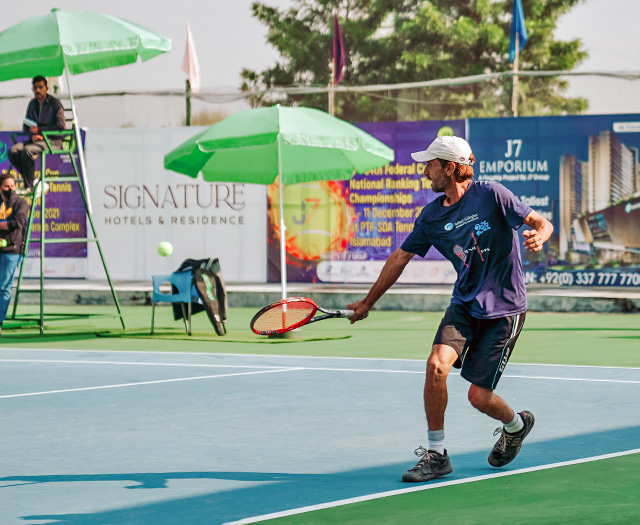Apart from skill (which is a very important ability), the relative importance of the physiological parameters such as speed, agility and endurance differ in their contributions to making a champion tennis player.
 tennis fitness
tennis fitnessHere are some suggested tests for the different categories of fitness that are important for tennis. See also a discussion on the components of fitness for tennis.
Aerobic Fitness
Aerobic fitness is crucial for tennis players as it enhances endurance, enabling them to sustain high-intensity rallies and matches without fatigue, allowing quicker recovery between points. Improved aerobic capacity also supports faster on-court movement and agility, enhancing overall performance and reducing the risk of injury during extended play. If testing large groups of players, the shuttle run (beep) test would usually be the most appropriate test. You can find information on many other aerobic tests here.
Flexibility
Flexibility is essential for tennis players as it promotes a wide range of motion, enabling them to reach, stretch, and maneuver around the court effectively, reducing the likelihood of strains or injuries. The flexibility tests should be specific to the actions of tennis. The sit and reach test can be done for lower back and hamstring flexibility. Other flexibility tests should also be performed.
Strength and Power
Strength and power are vital for tennis players as they facilitate powerful shots, quicker acceleration, and explosive movements around the court, enhancing shot velocity and the ability to generate force, allowing for more forceful serves and ground strokes essential for competitive play. Strength (and power tests) should also be done to determine strength levels and to monitor strength changes in conjunction with training programs. The vertical jump test can be performed to measure leg power. Maximal strength tests for specific exercises should be conducted. A handgrip strength test is also suitable.
Speed
Running speed is critical for tennis players as it dictates their ability to swiftly cover the court, reach the ball, and react promptly to opponent shots, influencing their competitive edge during fast-paced rallies. A suitable fitness test would be the Sprint time over 20m, with split times for the 5m and 10m distance should be done if possible.
Agility
Agility is crucial for tennis players as it enables quick changes in direction, swift movements, and rapid adjustments, allowing them to swiftly navigate the court, reach the ball, and execute shots with precision, especially in high-pressure situations. The 505 agility test measures the ability to change direction 180 degrees, such as when the player runs along the baseline in rallies. A 90 degree turn test would also be suitable for tennis. The ability to turn to both the left and right direction may be different and should also be assessed.
Body Fat
Excess body fat should be monitored in tennis players. Any extra weight that is carried would affect the tennis player's ability to move freely around the court, and will increase the onset of fatigue. Body fat can be simply measured using the skinfold method. If this is not available, monitoring body weight changes would give an indication of body fat changes, assuming no change in muscle mass. See more about anthropometry for tennis.
Related Pages
- Discussion of the Fitness Components for Tennis
- More about anthropometry for tennis.
- Poll about the fitness components for tennis
- All about fitness testing


 Current Events
Current Events